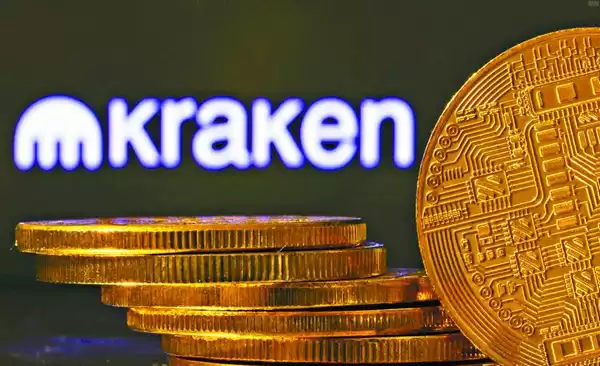-
 Bitcoin
Bitcoin $113800
-0.91% -
 Ethereum
Ethereum $3582
-3.04% -
 XRP
XRP $2.939
-4.32% -
 Tether USDt
Tether USDt $0.9999
0.00% -
 BNB
BNB $749.8
-2.02% -
 Solana
Solana $162.6
-3.81% -
 USDC
USDC $0.9998
-0.01% -
 TRON
TRON $0.3324
-0.44% -
 Dogecoin
Dogecoin $0.1977
-5.50% -
 Cardano
Cardano $0.7180
-4.86% -
 Hyperliquid
Hyperliquid $37.47
-3.76% -
 Stellar
Stellar $0.3910
-5.69% -
 Sui
Sui $3.384
-5.06% -
 Bitcoin Cash
Bitcoin Cash $551.7
-3.97% -
 Chainlink
Chainlink $16.19
-4.80% -
 Hedera
Hedera $0.2357
-5.31% -
 Ethena USDe
Ethena USDe $1.001
0.01% -
 Avalanche
Avalanche $21.74
-5.26% -
 Litecoin
Litecoin $118.4
-2.44% -
 UNUS SED LEO
UNUS SED LEO $9.004
0.60% -
 Toncoin
Toncoin $3.159
-6.97% -
 Shiba Inu
Shiba Inu $0.00001198
-4.16% -
 Uniswap
Uniswap $9.450
-4.55% -
 Polkadot
Polkadot $3.595
-2.90% -
 Dai
Dai $0.0000
0.01% -
 Monero
Monero $289.0
-4.92% -
 Bitget Token
Bitget Token $4.277
-2.69% -
 Cronos
Cronos $0.1375
-2.03% -
 Pepe
Pepe $0.00001008
-5.73% -
 Aave
Aave $252.9
-4.71%
How to calculate Kraken contract transaction fees
To calculate your Kraken contract transaction fees, determine the contract type, volume, account balance, tier level, and applicable maker/taker fees.
Nov 10, 2024 at 08:16 pm

How to Calculate Kraken Contract Transaction Fees
Understanding Kraken's Contract Fee Structure
Kraken offers a tiered fee structure for its contract trading services, with fees varying based on the contract type, trade volume, and account balance. Understanding this fee structure is crucial for calculating the total cost of your contract transactions.
Calculating Contract Transaction Fees
Follow these steps to calculate your contract transaction fees on Kraken:
1. Determine Contract Type and Volume:
- Identify the type of contract you wish to trade (e.g., perpetual or futures).
- Determine the contract size and trade volume.
2. Check Account Balance and Tier Level:
- Log in to your Kraken account and check your account balance.
- Determine your tier level based on your trading volume over the past 30 days.
3. Calculate Maker and Taker Fees:
- Maker fees are charged for placing orders that add liquidity to the order book.
- Taker fees are charged for executing orders that remove liquidity from the order book.
- Kraken's fee schedule provides specific maker and taker fees for each contract type and tier level.
4. Apply Referral Code (Optional):
- If you have a referral code, you may be eligible for reduced fees.
- Apply the code at the time of account registration or before placing a trade.
5. Calculate Total Transaction Fee:
- Multiply the trade volume by the applicable maker or taker fee.
- Apply any referral discounts or other applicable adjustments.
Example Calculation
Consider the following example:
- Trading 1 BTC perpetual contract (contract size: 1 BTC)
- Account balance: $500,000
- Tier level: Tier 1
- Maker fee: 0.0005%
- Taker fee: 0.0007%
Maker Fee Calculation:
- Calculate the maker fee as follows: 1 BTC * 0.0005% = $0.050
Taker Fee Calculation:
- Calculate the taker fee as follows: 1 BTC * 0.0007% = $0.070
Additional Considerations
- Funding Fees: Perpetual contracts are subject to funding fees that can affect your overall transaction costs.
- Margin Interest: If you trade with leverage, you will incur margin interest, which is calculated based on the amount of leverage used and the length of time the position is held.
- Third-Party Exchange Fees: If you transfer your assets from an external exchange to Kraken, you may incur additional fees from the third-party exchange.
Minimizing Contract Transaction Fees
- Use a referral code to lower your fees.
- Increase your trading volume to move to a higher tier and benefit from lower fees.
- Make orders that add liquidity (maker orders) to save on fees.
- Avoid trading during periods of high volatility when fees can be higher.
Disclaimer:info@kdj.com
The information provided is not trading advice. kdj.com does not assume any responsibility for any investments made based on the information provided in this article. Cryptocurrencies are highly volatile and it is highly recommended that you invest with caution after thorough research!
If you believe that the content used on this website infringes your copyright, please contact us immediately (info@kdj.com) and we will delete it promptly.
- XRP, DOGE, and the Altcoin Darling Dilemma: Where's the Alpha?
- 2025-08-06 08:30:11
- Beatrix Potter 50p Coins on eBay: A Collector's Guide to Value and Rarity
- 2025-08-06 08:50:12
- Dogecoin Price Outlook 2025: Barking Up the Right Tree?
- 2025-08-06 08:35:17
- Floki Price Super Cycle Watch: Key Support Holds, Will the Viking Dog Fly?
- 2025-08-06 08:50:12
- Executive Order vs. Financial Institutions: Is Political Bias the New Normal?
- 2025-08-06 08:55:11
- Solana, Jito, and Protocol Fees: A new era for jito dao
- 2025-08-06 09:10:12
Related knowledge

Why is my Bitstamp futures position being liquidated?
Jul 23,2025 at 11:08am
Understanding Futures Liquidation on BitstampFutures trading on Bitstamp involves borrowing funds to open leveraged positions, which amplifies both po...

How to report Bitstamp futures for taxes?
Jul 30,2025 at 08:35am
Understanding Bitstamp Futures and Taxable EventsWhen trading Bitstamp futures, it’s essential to recognize that these financial instruments are treat...

Does Bitstamp offer inverse contracts?
Jul 23,2025 at 01:28pm
Understanding Inverse Contracts in Cryptocurrency TradingIn the realm of cryptocurrency derivatives, inverse contracts are a specific type of futures ...

What is the difference between futures and perpetuals on Bitstamp?
Jul 27,2025 at 05:08am
Understanding Futures Contracts on BitstampFutures contracts on Bitstamp are financial derivatives that allow traders to speculate on the future price...

How to find your Bitstamp futures trade history?
Jul 23,2025 at 08:07am
Understanding Bitstamp and Futures Trading AvailabilityAs of the current state of Bitstamp’s service offerings, it is critical to clarify that Bitstam...

Can I use a trailing stop on Bitstamp futures?
Jul 23,2025 at 01:42pm
Understanding Trailing Stops in Cryptocurrency TradingA trailing stop is a dynamic type of stop-loss order that adjusts automatically as the price of ...

Why is my Bitstamp futures position being liquidated?
Jul 23,2025 at 11:08am
Understanding Futures Liquidation on BitstampFutures trading on Bitstamp involves borrowing funds to open leveraged positions, which amplifies both po...

How to report Bitstamp futures for taxes?
Jul 30,2025 at 08:35am
Understanding Bitstamp Futures and Taxable EventsWhen trading Bitstamp futures, it’s essential to recognize that these financial instruments are treat...

Does Bitstamp offer inverse contracts?
Jul 23,2025 at 01:28pm
Understanding Inverse Contracts in Cryptocurrency TradingIn the realm of cryptocurrency derivatives, inverse contracts are a specific type of futures ...

What is the difference between futures and perpetuals on Bitstamp?
Jul 27,2025 at 05:08am
Understanding Futures Contracts on BitstampFutures contracts on Bitstamp are financial derivatives that allow traders to speculate on the future price...

How to find your Bitstamp futures trade history?
Jul 23,2025 at 08:07am
Understanding Bitstamp and Futures Trading AvailabilityAs of the current state of Bitstamp’s service offerings, it is critical to clarify that Bitstam...

Can I use a trailing stop on Bitstamp futures?
Jul 23,2025 at 01:42pm
Understanding Trailing Stops in Cryptocurrency TradingA trailing stop is a dynamic type of stop-loss order that adjusts automatically as the price of ...
See all articles

























































































